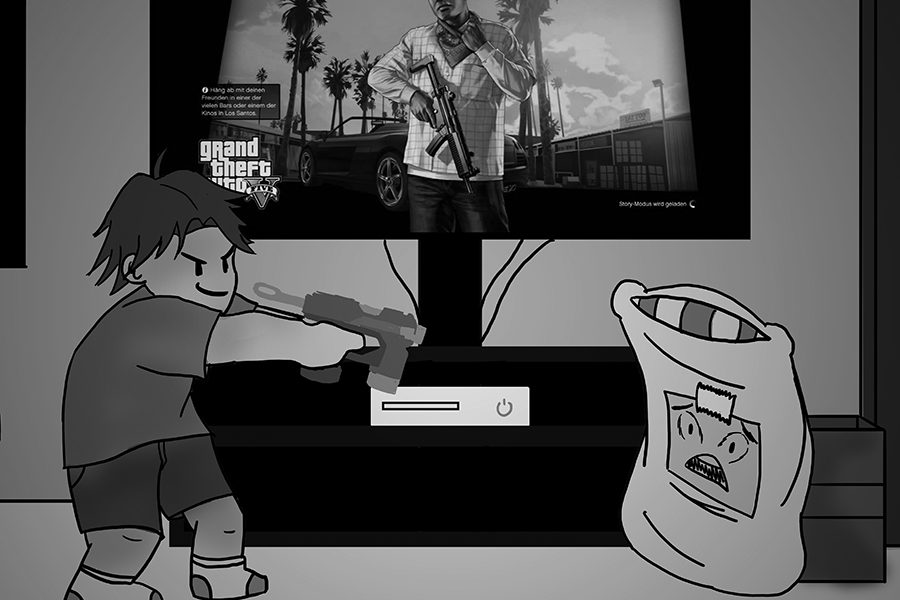Rated M
Video games may have violence, but it adds to the story and climax
Concerned parents continue to rant that videogames are linked to real-world aggression and addiction. Yet teens continue to defend themselves and their choice of entertainment. All the while, researchers are conducting studies that support both sides. However, there is no doubt that videogames are becoming increasingly more realistic and violent. Parents need to understand the power they have when purchasing violent games.
A game’s maturity is based on the Entertainment Software Rating Board.
The board sets the standards for levels of violence and other inappropriate content that comes from a game. Matthew Camarena and Alondra Ceja Valdovinos, both freshman, continuously buy violent games. Camarena explains how buying nonviolent games feels disappointing. “I feel like there is more of a challenge when the game is more violent,” he said.
The ESRB’s lowest rate, “E for Everyone,” contains mild violence or infrequent use of mild language within the game. These “E” rated games are meant for younger audiences and contain cartoon images. “The rated E games just feel childlike and aren’t as fun,” he said.
Although these innocent games contain violence, parents should monitor and research each game when they purchase. Standards that are printed on the game are often very obscure and exaggerated. Violence in the games often contain harmless objects that players use to injure other players or in-game characters. However, as the games increase in their maturity level, these innocent images quickly turn dark and realistic.
Video game retailers like Gamestop require adult permission when buying rated “M,” or “Mature,” games.
This allows parents to have the final say in what games are appropriate for their child. For Camarena, he was thankful enough to have parents that allowed him to play violent games. “I was like 7 when I played my first violent video game,” he said. “My parents didn’t mind, since my older brother started to play them when he was the same age as me.”
Recent games provide a more realistic experience that can be concerning to most adults. Camarena feels that these games give him a sense of joy as if he were to watch a horror movie. “I watched a character have his arm ripped off and I was horrified when I saw it,” he said. “It’s a pleasing feeling knowing that games can make me feel that.”
Similarly, Ceja enjoys the intense gameplay. “In a video game it’s just fun to kill,” Ceja said. With the permission of her older sister, she is able to acquire mature games. She plays games within her sister’s room, and in an environment that can be monitored. “Occasionally my sister will play with me and she enjoys it just as much as me,” she said.
“Call of Duty: Black Ops 4,” is one of the more recent games that Ceja plays, and one of the most popularized violent games. With a high selection of weapons and guns, the game contents are shocking to most parents, but Ceja looks into the story rather than the violent intentions. “After the violent scenes there is still story,” she said. “The violence helps to escalate the experience.”
Ceja’s parents would comment on her choice of violent games, concerned for her mental attitude. “I’m not a violent person and my parents understand that,” she said. In the end Ceja plugs in her controller and enjoys.
Ceja parents would comment on her choice of violent games, concerned for her mental attitude. “I’m not a violent person and my parents understand that,” she said. In the end Ceja plugs in her controller and enjoys her violent games.









